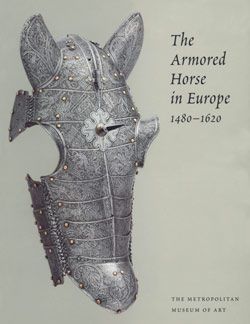Three Pommel Plates of a Saddle
Not on view
The three-piece construction of this set of pommel plates was standard across western Europe throughout the sixteenth century. A central plate covering the area of the pommel itself is flanked by two plates extending downward at a ninety-degree angle that serve both to cover the flanges of the saddle bow and to protect the front of the rider's thighs. During conservation two minute traces of mercury gilding were found around the rivet holes on the pommel plate and one sideplate, indicating that the steels were originally decorated to some extent with gilding.
Although armored saddles must have been faily common for heavy cavalry by the late fifteenth century, surviving saddle steels dating earlier than about 1525 are surprisingly rare. A date of about 1510 to 1520 is suggested for this set because of the exceedingly bold form of the roped borders, found at the top of the pommel and the bottom edges of the sideplates, and the fluted decoration, consisting of pairs of shallow, concave diagonal grooves on the sideplates. The stylistic features indicative of an early date are the loose and open diagonal twist of the roped borders, as well as the concave nature of the paired flutes and the plain areas of smooth steel between them. These are also characteristic of the period from about 1510 to 1520, the first decade in which roping and fluting were combined in this way to decorate German armor.
This image cannot be enlarged, viewed at full screen, or downloaded.


